Posted by · Leave a Comment
Six years ago we were hurriedly looking at properties in the area and happened to be with a real estate agent driving right by the Oley Community Fair, which was in full swing.
Parked cars filled every available street spot while large fields and temporary lots accommodated the overflow.
I said something to the agent like, ‘wow, look; a county fair!’ She said that it wasn’t—that it was the “community fair.” That, although it’s open for the public to attend, only residents whose townships join the ag-rich Oley Valley could participate in the contests/judging.
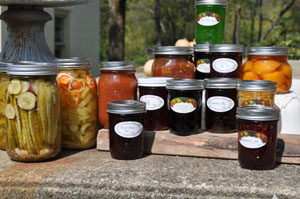
Canning Competition Entries
And, oh, what a level of participation! From the numerous volunteer committee heads and organizers who work year-round for the three-day culmination, to the local fire department, to the thousands who turn out, the excitement and anticipation seems to increase with each year’s festivities.
My friends and I will joke with one another about the “blue ribbons” but, kidding aside, it’s not about that at all. It’s about the celebration of a lifestyle and a heritage that we strive to keep alive. It’s a three-day celebration of a well-connected community… connected with each other and connected to this valley.
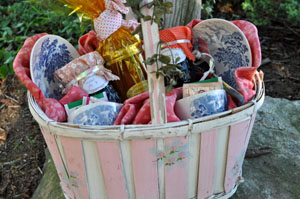
Best Display of Jellies
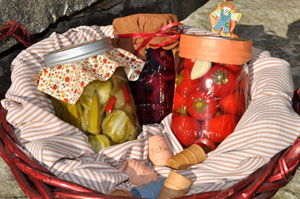
Best Display of Pickles
This is probably a good time to thank Evelyn (again); she was our real estate agent who suggested we might be happy here.
Comments Off on Blog Post About Our ‘Visiting a Community Fair’ Webisode

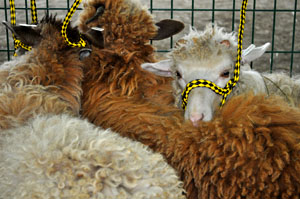 Rebecca Gunther, of
Rebecca Gunther, of 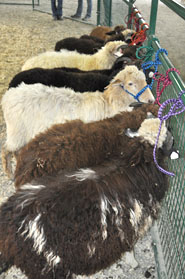
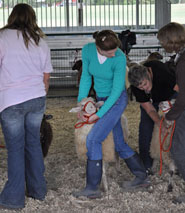
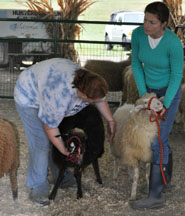 I was bound and determined NOT to let Oneida show ME up in the ring (after all, Ingrid was there!) so I kept her at my side with no slack in the lead and a hand firmly on the back of her neck and another cupping her jaw. Imagine my dismay, after Ingrid’s first few passes, when she asked me to move to one end of the line with Oneida. I had watched a few judgings before this and knew that the end where she was moving me was not where the winners had been repositioned. I probably had “rookie” stamped on my forehead! As beautiful and deserving as Oneida was, I was convinced I had done something as a handler to disqualify us. I was pretty sad.
I was bound and determined NOT to let Oneida show ME up in the ring (after all, Ingrid was there!) so I kept her at my side with no slack in the lead and a hand firmly on the back of her neck and another cupping her jaw. Imagine my dismay, after Ingrid’s first few passes, when she asked me to move to one end of the line with Oneida. I had watched a few judgings before this and knew that the end where she was moving me was not where the winners had been repositioned. I probably had “rookie” stamped on my forehead! As beautiful and deserving as Oneida was, I was convinced I had done something as a handler to disqualify us. I was pretty sad.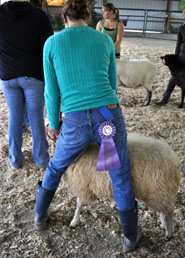
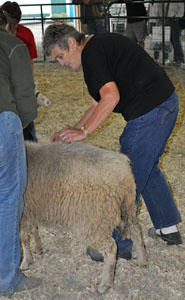 Not only was this rookie wrong about the line-up, Oneida captured a blue-ribbon for her class and we went on to grab the Grand Reserve ribbon!! I couldn’t believe it! Well, it wasn’t “we” after all. Oneida is a one-of-a-kind Navajo-Churro and Ingrid validated that. However, I’d like to think my grip on that little girl that day ushered our chances right along in the ring.
Not only was this rookie wrong about the line-up, Oneida captured a blue-ribbon for her class and we went on to grab the Grand Reserve ribbon!! I couldn’t believe it! Well, it wasn’t “we” after all. Oneida is a one-of-a-kind Navajo-Churro and Ingrid validated that. However, I’d like to think my grip on that little girl that day ushered our chances right along in the ring.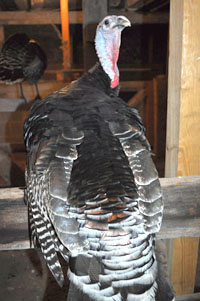
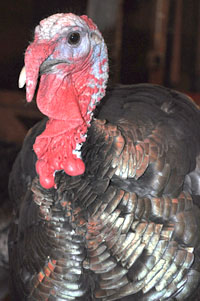
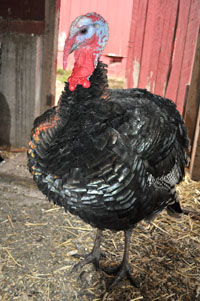
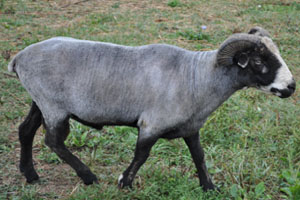
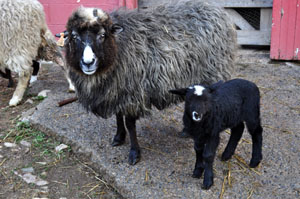
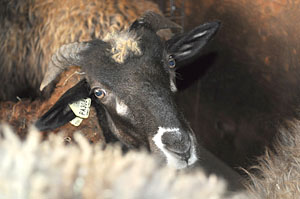
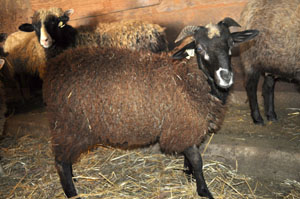
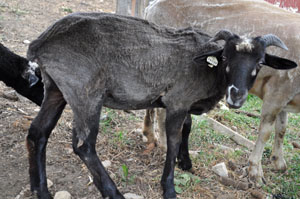
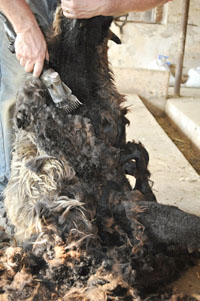 Navajo-Churro sheep need to be shorn twice a year. Their wool grows an inch a month.
Navajo-Churro sheep need to be shorn twice a year. Their wool grows an inch a month.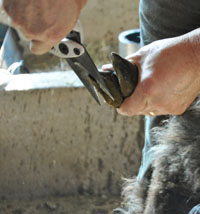 He’ll trim the hooves, de-worm (if we wish) – which just means he administers a “drench,” that is a liquid – and shear.
He’ll trim the hooves, de-worm (if we wish) – which just means he administers a “drench,” that is a liquid – and shear.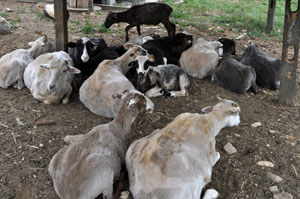 Sheep almost look like different animals after a shearing. It just has to feel good to have that “haircut” every six months or so – just look at how relaxed they all looked that next morning.
Sheep almost look like different animals after a shearing. It just has to feel good to have that “haircut” every six months or so – just look at how relaxed they all looked that next morning.
